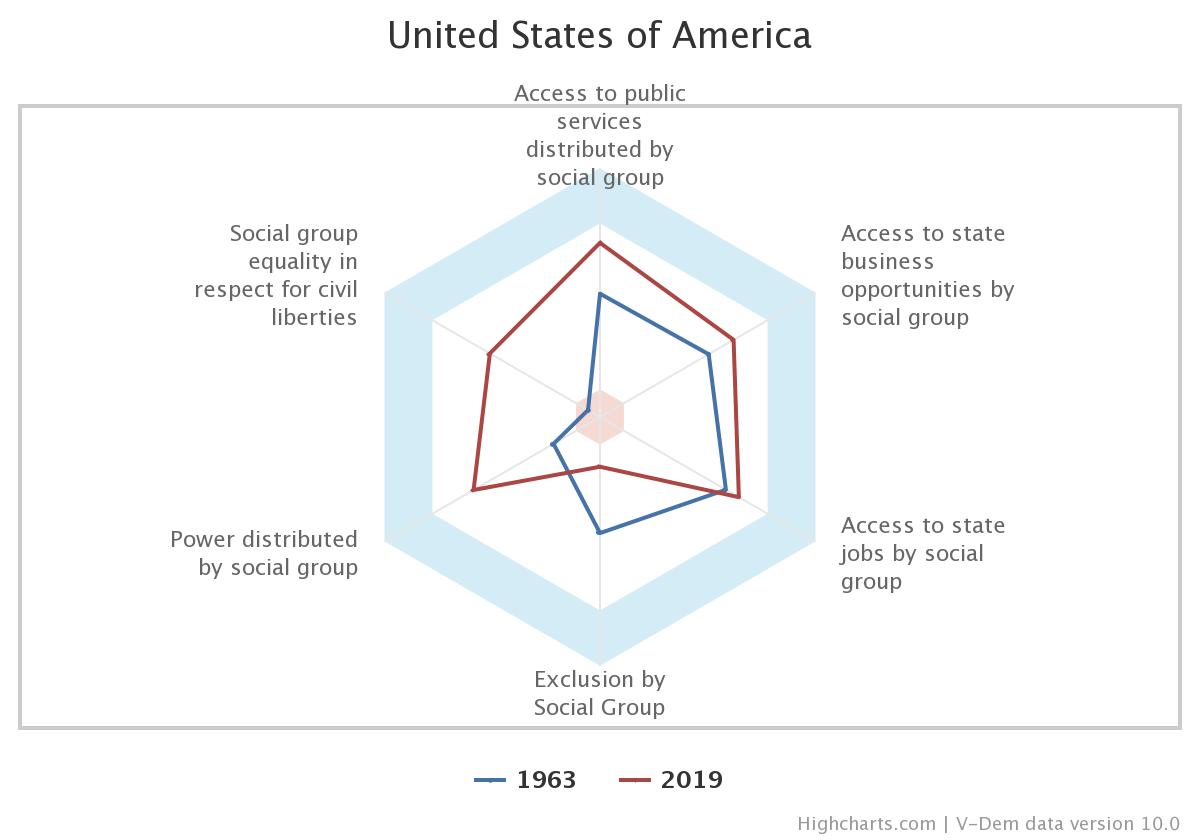Exclusion by Social Group in the USA
By: Paul Bederke
Aug 27, 2020
On August 28 in 1963, over 250,000 civil rights supporters marched on the ‘March on Washington for Jobs and Freedom’ through Washington, D.C., demanding equal civil and economic rights for African Americans. At the Lincoln Memorial, Martin Luther King Jr. held his iconic speech “I Have a Dream” that addressed the continuing inequality and exclusion that Black people face every day. Since then, issues of racial equality have been raised repeatedly across the USA. The death of George Floyd at the hands of a white police officer earlier this year sparked a new wave of massive rallies against racial discrimination.
This week, we are using the V-Dem online tools to look at the broader changes in exclusion by social groups in the USA since Martin Luther’s speech in 1963. V-Dem’s index for exclusion by social group captures whether individuals are denied access to services or participation in governed spaces based on their identity or belonging to a particular group. Social groups can be differentiated by caste, ethnicity, language, race, region, religion, migration status, or some combination. The index consists of five sub-indicators, each of which ranges from 0 (worse) to 4 (better).
The graph shows that the overall situation of exclusion by social group improved between 1963 and 2019. The most significant improvements have been made regarding social group equality in respect for civil liberties. Among other things, segregation was de jure outlawed in 1964 but is still present today, and some social groups enjoy moderately fewer civil rights than others. The findings for the power distributed by social group indicator are similar. Although significant improvements have been achieved, political power is still partly unequally distributed across social groups. The improvements in the area of access to state business opportunities, state jobs and public service distribution by social group are less substantial but were already at an intermediate level in 1963. However, some parts of society remain to be disadvantaged.
The overall situation for social groups in the USA has improved significantly compared to 1963, but some social groups are still not treated equally. The current protests might lead to further improvements in the future.
If you want to learn more about exclusion by social group in the United States of America, use our online analysis tools at v-dem.net.


